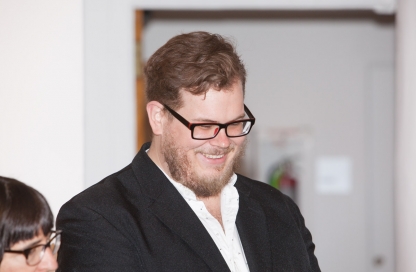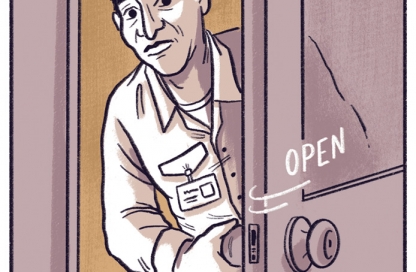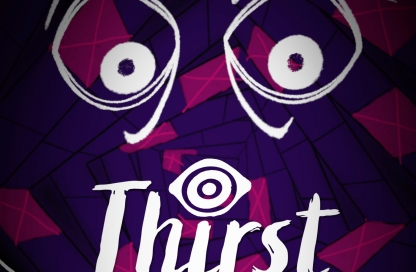Tool tales: The ten year quest for the perfect tablet
I remember using my first tablet. It wasn’t an iPad. It was an HP using Windows XP. The year was 2003 and I got the demo unit to try out on my trip to New Orleans.
At the time I was doing a weekly comic strip called The Block. I decided to sketch out, write and finish the strip on the tablet. This was the result:
It’s low-rez, hard to read and, man, was it ever hard to complete!
For comparison, here’s one done on paper, with post on a PC.
While the result was a five hour project (one that usually took me two hours) and an awkward-looking comic strip, the process of crafting a scene on the tablet was captivating. I noticed right off the bat that I was treating my ideas with rougher gloves. I was more willing to erase, try again, riff. I guess it was similar to the way my writing changed when I first started using the PC. It was challenged more, flowed more, with less of a voice in my head saying, “Be careful! You don’t want to have to erase that or, Thor forbid, start over!”
(Yes, that voice can be a good thing, but I’m not here to quantify the benefits of analog processes. Yet.)
The fact is, when I worked on a tablet for the first time it was the start of a quest that went on for years. I got a taste of the slate, and I sensed there was something spectacular lurking in the idea somewhere. But it wasn’t good enough. Not even close.
So when the first iPad came out, it was a revelation. Not in the sense that I’d never seen anything like it before. I had. For years. But the whole experience was so much smoother. And when the app store opened, fuggedabouddit. I had my choice of text editors, note takers, sketch apps, and all the other perks that we take for granted today.
But how often do we take a deep breath and look back on how things have changed? This morning, as I created a new character for my upcoming book series, Atticus Quimby, I took a moment to appreciate what was happening.
I sketched the character in Paper, scrawling notes in the “gutters” to flesh him out.
I flipped to Evernote where I copied over some thoughts, editing in my head what resonated as the best material.
I switched back to Paper and just started using it as a notebook. I didn’t mean to. I know it’s for drawing. But before I knew it I had two pages of notes that I liked. I exported the notes as an image to Evernote and stored it in my Atticus Quimby character folder, with seven tags to make it easy to find.
So, in the final analysis, I was using the tablet as a virtual pencil and paper, notebook, sketchbook and filing cabinet. Would pencil and paper have done the trick too? Maybe. And sometimes, when the project calls for it, those are my tools.
But I wanted to recognize the magic of having a slate in my bag that can absorb my habits, my idiosyncrasies, and my hefty processes. But not only absorb them, improve them by smoothing out access to my work. I find that astonishing when I look back at 2003 and see how far the tablet has come.
Sometimes it feels as if this era (and all of its tech) is the start of a massive rewiring of the creative process. Now that a tablet can help many of us brainstorm and create without getting in the way, what’s next?




